Tags
"medicine"
Providence Brain and Spine Institute: Carly Goldblatt, Winter Shadow 2016
When I met Dr. Tracy Sax, it had been 3 years since I had given up my dream of becoming a doctor. I had taken an introductory Biology course and felt that I was not capable of doing the work it would take to achieve that goal. I expected this Winter Shadow to give me certainty that I was not interested in work as a clinician, particularly as an MD. As happens often in life, I got the exact opposite.
The dream was reawakened in a Pete's Coffee shop in North Portland. I sat down with Tracy Sax to do some introductions and preliminary instruction before the Shadow began. Her enthusiasm for what she did stood out to me in a way I don't see often. At first it scared me because I worried that my first bad experience with Biology leaving me with no passion for the field said something about me as a student. I thought if I couldn't make it through that there was no way I'd make it through medical school. But she was so encouraging, without even knowing me she encouraged me to go into medicine. Her enthusiasm was infectious.
We dealt with some really emotionally taxing material and I was proud of the way I handled that. I sat in on a session during which we preliminarily diagnosed a young man with ALS. I have felt confident in my potential as a clinical psychologist and this demonstrated that in this field, doctors get an opportunity to run tests and diagnose patients but also help them cope with these diagnoses, if only for a little while. Tracy handled the conversation in a personal and professional way. I learned that neurology is a field that could allow for a combination of my interests and skills in psychology.
Kartini Clinic for Pediatric Eating Disorders: Alicia Molina, Winter Shadow 2016
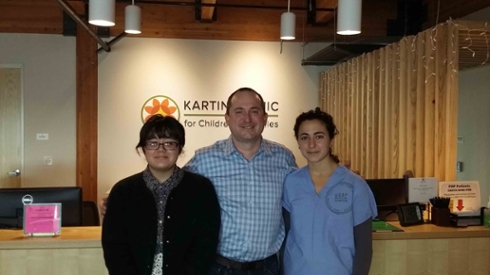
For the first two weeks of January, I had the opportunity to intern at the Kartini Clinic in Portland. I applied to this internship because it had somewhat to do with my major, and I had never been in a healthcare setting. I was curious how my skills applied to a pediatric eating disorder program and wanted to be a part of something that helps children and their families through this process. My sponsor was Morgan who is a Reed alumnus from 1994. I worked closely with him and Megan, who is head of the Business Office at the clinic. In this internship, I input data, analyzed it, and gave a presentation on my findings.
I was first of all very surprised with how much I was allowed to do. It was way more hands on than I was expecting which was a definite plus. As it was the beginning of the new year and December’s data had not been completely submitted, I started off with raw data entry. I thought my work would end there, but I was presented with possible questions about our patients that I could analyze. My first day there, I was able to participate in a finance meeting that went over revenue and expenses for 2015.
My primary job was to analyze patient data with regard to age, gender, and type of insurance for a nine-month period. Then, I came up with estimates on the average revenue of patient, average length of stay, and average revenue based on insurance. I worked closely with Megan in regards to the specifics of my analysis. We regularly checked in with one another both in person and though email. When she went to work off-site, we discussed the materials that I should look into the day prior so that I wouldn’t run out of things to do.
California Emergency Physicians with Dr. Ruth L. Selvidge: Karla Velarde, Winter Shadow 2016
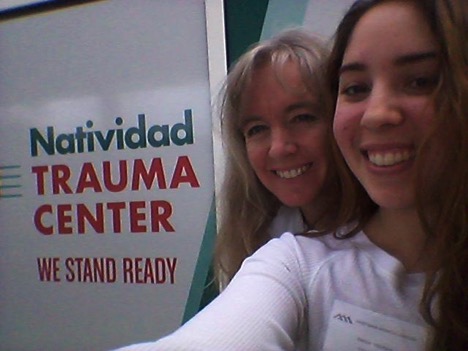
This January I shadowed Dr. Ruth Selvidge, an Emergency Department (ED) physician at Natividad Medical Center (NMC) for a week. NMC is a Level II trauma center and it is located in Salinas, California. The ED at NMC consists of a triage area at the front where patients are first reviewed by physician assistants and nurses. Based on this first examination, the patients are either discharged or they are sent to the back of the ED for further examination by the ED doctors. This is where Ruth steps in. Her job consists of examining these critically ill patients and determining the proper treatment. Ruth is usually accompanied by one or two ED doctors during her shifts, but there are some instances where she is running the ED by herself. She has 23 years of experience and was recently assigned as the temporary Assistant Director of the ED.
During this externship I shadowed Dr. Selvidge and discussed the cases with her. I learned about filing charts, illnesses and diseases, the scribe program at NMC, residency programs, and what a day looks like for an ED doctor. I learned a lot because Ruth always took the time to review the cases and explain their differential diagnoses. I observed interesting cases because, as Ruth put it, I brought a “black cloud” to the ED since every time I stepped in there were more trauma cases than usual: car accidents, gunshot wounds, stab wounds, among others.
Ruth informed me that the hardest part of her job is the humanitarian aspect. She explained that recently doctors are in front of a computer far more than with patients, due to the way information is archived.
Continue reading California Emergency Physicians with Dr. Ruth L. Selvidge: Karla Velarde, Winter Shadow 2016
Santa Cruz Emergency Department: Michaela Adams, Winter Shadow 2016
I would like to begin by saying that I would recommend this winter shadow to anyone who is interested in medicine, even if that desire is not a burning passion. Not only was this shadow informative, but even more importantly, it was inspiring. Reed has often been sighted as basing much of its educational philosophy on the importance of theory rather than practice. At times this type of education has left me wanting to see more implementation of what I was learning. This shadow illustrated a physically hands on application of all the science that I had enjoyed so much at Reed. In other words this shadow gave me a very specific idea of a career I could work towards, which is something Reed often neglects to provide for its students.
The shadow experience itself involved a week shadowing emergency room Doctor Ruth Selvidge. The first shift I observed was the day after I arrived. It was a cacophony of sensory input that was exhilarating and the hours flew past. The only indication that it had been ten hours was my physical fatigue. I spent the rest of the evening parsing apart what I had seen during the day, and what I had thought and felt. One of my first, most vivid impressions was the people.
Every part of the job involves contact with people, however those that initially caught my attention were not the patients, but the other doctors, nurses and staff. They were some of the most patient, considerate, smart, funny and talented people I had ever seen working together in a workplace. I arrived expecting to be amazed by the patients and ailments and traumas, but instead found myself enjoying every snatch of conversation that the staff had time for. This highlights my other first impression, which was that there was hardly anytime down time. For a work environment that could rupture into a high stress situation with a single phone call, everyone treated one other with respect and kindness. It was one of the best teams I’ve seen. For me it was the first time I witnessed a job that I wished I could really be a part of.
Continue reading Santa Cruz Emergency Department: Michaela Adams, Winter Shadow 2016
Kartini Clinic for Pediatric Eating Disorders: Mitra Shokat, Winter Shadow 2016
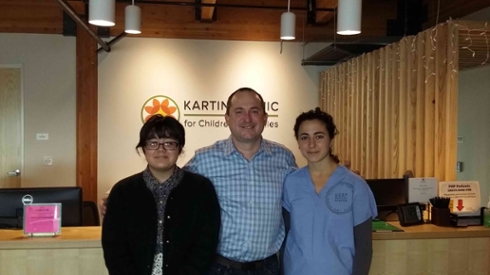
Kartini Clinic is a small health clinic in Northeast Portland that offers treatment for pediatric patients with eating disorders. Kartini’s approach to eating disorder treatment differs in many ways from that of other facilities. The clinic’s treatment program is family-based and places an emphasis on eating disorders as genetic metabolic disorders instead of psychiatric disorders. In the past year, Kartini Clinic has even implemented individualized genetic testing as a part of their treatment process.
Upon intake, Kartini Clinic patients, ranging in age from 6 to 23 years old, are placed in one of the clinic’s three stages of treatment: the partial hospitalization program, the intensive outpatient program, or the outpatient program. During my two weeks shadowing one of the clinic’s medical assistants, I was given the chance to observe all three levels of treatment. However, I primarily interacted with patients in the partial hospitalization program, taking vitals each morning and occasionally eating meals with them. I learned some incredibly useful skills over the course of those two weeks, including how to take blood pressure manually, how to analyze urine samples, and how to recognize abnormal levels in certain vital measurements.
During my time at Kartini Clinic, I also conducted research. I was responsible for collecting data on the initial diagnoses and intake medications of one hundred of the clinic’s most severe patients. This data will later be compared to the results of genetic testing for those patients. This genetic testing, conducted by a company called Genomind, gives the doctors at Kartini Clinic information about specific mutations that are commonly associated with negative reactions to certain psychoactive drugs. This type of information is invaluable to the doctors, as they often prescribe psychoactive drugs to combat the anxiety and depression that often accompany eating disorders. The goal of our research is to observe any correlations between the results from this genetic testing and the severity of the patient.
Multiple Sclerosis Neurological Practice and Research: Johhny Mendoza, Winter Shadow 2016
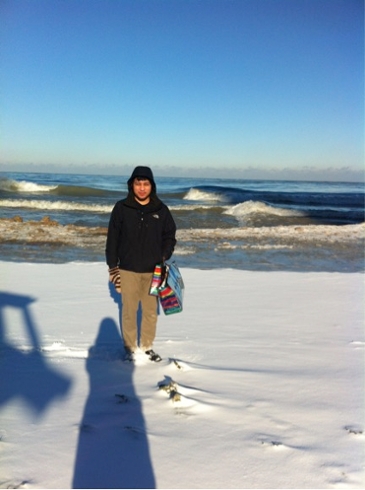
Walking down the shore of Lake Michigan right before I slipped on ice. Photo Credit: Shannon Bacheller, ‘16
I’m not one to travel. NYC had been my home for 18 years before I got accepted to Reed. Stasis breeds complacency and so I left my home. Moving to Portland would stir in me the sort of anxious energy that can be channeled productively. Even so, I wasn’t comfortable calling the place home until my last semester. I arrived with the dream of becoming a doctor. Having completed a synthetic chemistry thesis, I left more confused now than before as to what my true love was, be it medicine or chemistry. Being so infatuated with two things is a strange thing indeed.
Though I welcomed the short break, I was eager to ease my cognitive dissonance. My next destination was Chicago, IL, where I was to shadow Dr. Daniel Wynn (’77, Biology) at his private neurology practice in the suburbs. I left NYC once more in the hopes that a wiser soul than I, a clinical researcher and neurologist at a successful multiple sclerosis center, could aid my plight. Being in a foreign town would force me to explore.
Being a traveller grants one the comfort of knowing that, when overwhelmed by the novel, home is only a ways away. After my first visit at the clinic, it was obvious Dr. Wynn was a master of his craft. He charmed his patients, talked to them like they were old friends. His patients appreciated his wit (as did I), his genuine care, and above all, his patience; he treated his patients as equals. He took his time to explain all things in detail. He consulted with his patients on all matters and left all final decisions up to them. They worked as a team. They shared the ups and downs of their treatment, the good and bad stories, their wishes and worries.
Continue reading Multiple Sclerosis Neurological Practice and Research: Johhny Mendoza, Winter Shadow 2016
La Jolla Village Family Medical Group: Sydney Lewis, Winter Shadow 2016

For two weeks this winter, I shadowed Dr. Dan Michaels in the La Jolla Village Family Medical Group. As a student interested in pursuing medical school after Reed, I was thrilled for this opportunity. This experience exceeded my expectations and has left me more excited than ever for my future.
Every day of my shadow, I followed the day-to-day work of Dr. Michaels. This work included seeing patients, refilling prescriptions, following up with patients about test results, and dealing with pesky pharmaceutical representatives. As I had expected, the work life of a primary care physician was busy. In addition to annual exams, the patients we saw included people with sore throats, stomach pains, aching muscles, addiction concerns, and surgery follow ups. The variety was exciting and Dr. Michael’s grace leaping from case to case was impressive.
In each appointment, Dr. Michael’s would open the door and recite, “I have a student that would like to stand by. Is that alright with you?” With the exception of two patients, I was graciously welcomed as the patient appeared flattered to be considered an interesting case and eagerly allowed me to learn from their body. In these rooms, I was honored to be a part of these patients’ lives in even the smallest way, whether that meant offering a sympathetic glance as they shared their frustrations with weight loss, holding the hand of a brave patient going through a tough point in their health, or simply thanking the individual for trusting me with these details in their life.
Reed Winter Externship Reflections 14: Number Nine, ENT Center and Hillsdale Hospital, Rachel Ellinger
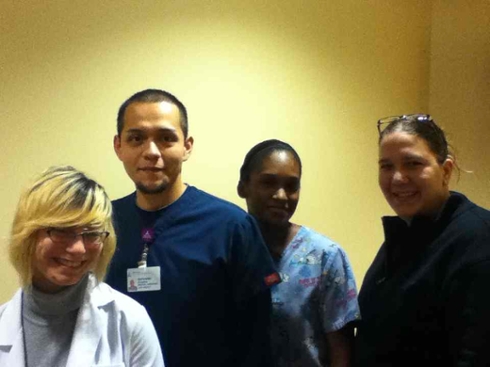
Hearing Tests, Ear Wax, and Tonsils, Oh My! Thoughts from West Suburban ENT Center and Hinsdale Hospital
First arriving in Chicago, I was very nervous. Being in a cold and foreign city, I wondered what the winter externship would be like. It turned out that externing for Dr. Mahoney, an otolaryngologist at the West Suburban Ear Nose and Throat Center and Adventist Hospitals was an amazing and eye opening experience worth above and beyond anything I could have imagined. Dr. Mahoney and her family were welcoming and wonderful. They opened up their doors and provided me with an opportunity to share in their daily life for the week of the externship. On the very first day, we arrived at the Hinsdale Hospital around 7:30 am to meet her pediatric patients for surgery. On days that she does surgery, she’ll impressively and safely complete a number of tonsillectomies, adenoidectomies, and tympanostomies (ear tube surgery) in only a few hours! It was amazing how she so skillfully blended efficiency with patient and parent relations, making sure that everyone was well informed and provided the best care possible. In all surgeries, especially pediatrics, and even the non-invasive ones, safety is key. Having the opportunity to observe a team of skilled health professionals at work, whether performing surgery or checking up on a patient, reminded me of the rehearsal and production process for theatrical performances. Success in even the smallest things was impossible without the dedication and skill of everyone working together. It’s amazing the effect that one small surgery can have on someone’s life. Though the surgeries and checkups that she tends to perform are more for improving quality of life, in the long run, something as simple as removing your adenoids to lessen middle ear infections and fluid, snoring, or even sleep apnea, for example, pays back tenfold, especially during the developmental stages of a child. For many children, excessive ear infections can prevent proper hearing of stimuli in one’s environment, inhibiting or stunting a variety of developmental functions, most importantly included among these being successful language acquisition.
After a few routine surgeries, Dr. Mahoney and I traveled to other hospitals that she is affiliated with to check up on other patients, whose ages ranged from recently born to middle aged, and perform tracheostomy tube changes. Then we went to Grand Rounds and listened as the keynote speaker discussed their research and current developments on the use of Gabapentin for radiation induced oral mucositis, a common complication of radiation therapy, to reduce the need for high total doses of narcotics and unplanned treatment interruptions during chemotherapy. Following this, we went to the clinic to meet with patients, where I also met and observed the work of wonderful medical assistants, secretarial staff, an allergist, a pediatric endocrinologist, and two audiologists, who very kindly let me shadow them during hearing tests and discuss experiences and educational opportunities pertaining to the field of audiology, which is a career I’m interested in pursuing. Over the course of the week, the above schedule outlined was somewhat routine, but the number of opportunities to meet and learn from professionals was endless, and there was even time to visit the Oriental Institute and Art Institute of Chicago! While my original learning objectives were to gain a better understanding of the field of otolaryngology and audiology and to gain contacts and references. The opportunities available went above and beyond what I could have hoped, and my personal and professional objectives for this experience helped me to explore not only these fields, but also the health care field at large. I gained a better understanding of what being a doctor in both a clinic and hospital setting Rachel Ellinger Winter Break Externship Blog Post West Suburban ENT Center is like and found out more about various other careers both that I have considered and that I never even knew existed in hospital settings, such as nursing, respiratory therapy, occupational therapy, social work, psychiatry, and theological counseling. I also learned more about what medical employment in the military and navy is like, which is another path that I’ve been interested in.
Working with Dr. Mahoney and meeting with various other professionals, I realized that every profession requires dedication and love for what you do, because success in any career whether it be a baker or a doctor, requires hard work and devotion. And, it's very difficult to do anything that becomes such a big part of your life unless you love it, so it's very important to follow what you're passionate about and what makes you happy.
Continue reading Reed Winter Externship Reflections 14: Number Nine, ENT Center and Hillsdale Hospital, Rachel Ellinger
Reed Winter Externship Reflections 14: Number Seven, Montana City Hospital, Allison Ashby
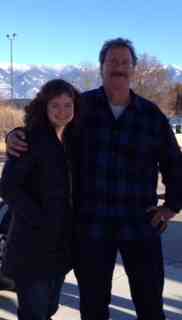
David Smirnow and his family are fabulous hosts. They let me stay in their home for five days while I shadowed different doctors including David at the city hospital. I was able to see the beautiful Montana landscape every morning on my way to "work" with David. I say "work" because I got to watch everything but did not actually have to do anything. After all I am not certified to cut someone open, not to mention it was too much fun to be called work. David was invaluable in setting up day for me to shadow in pathology, radiology, anesthesiology, and surgery. I had the opportunity to see cancerous cells under a microscope, bones and the womb through CT, MRI, and X-ray scans, brain surgery, and more. The doctors were friendly and full of information to help lead me along my path to medicine. I was also able to see an autopsy, which I admit was a little unnerving but very educational. It was like an anatomy class but more smelly. Overall, definitely an experience not to be forgotten!
Continue reading Reed Winter Externship Reflections 14: Number Seven, Montana City Hospital, Allison Ashby
Reed Winter Externship Reflections 14: Number Two, Naturopathy with Dr. Lisa Shaver, Austin Stuedell
I have long believed that nature is the best remedy and that modern medicine needs to become a more holistic process that heals through natural plants and herbs. Despite this conviction, naturopathy was not a term I was familiar with until I came to Portland and came across multiple naturopathic health clinics. I soon learned that the philosophy behind naturopathy shared my beliefs about what was the best treatment for patients. My research into naturopathy left me with an intense desire to find out what attending a naturopathic healthcare clinic would be like.
Then, like fate, Reed posted its available externships for winter breaks and one of the opportunities was at a naturopathic clinic. Therefore, my first day back in Portland was spent fulfilling my wish of learning about working in a naturopathic doctor’s office.
Continue reading Reed Winter Externship Reflections 14: Number Two, Naturopathy with Dr. Lisa Shaver, Austin Stuedell
Daniel Lybrand, Wehrli Lab Notes, Post 3
My internship at OHSU has now ended, but fortunately not my partnership with the Wehrli lab. I will continue on as a research assistant for the next year before proceeding to graduate school and will hopefully help to advance the lab’s ongoing projects.
We have been making good progress towards understanding some of the mechanisms by which processes dependent on Wnt signaling are regulated. As mentioned earlier, fluorescence microscopy figures prominently in our research. Marcel has taken a somewhat non-traditional approach to fluorescence imaging for this project in order to skirt some issues peculiar to the Wnt pathway. This has largely paid off, but we are sometimes hindered by issues unrelated to the imaging techniques themselves: often, the biggest challenge we face comes from our research subjects before they are even dissected. While Drosophila are typically easy to care for, certain genetic constructs, pivotal to our research, have a disappointing effect on their survival rates. An experiment that seems very straightforward at the outset can be a laborious process as fly crosses are made and remade to yield the needed larvae. Despite all the resources that our fully functional lab has access to, research can come to a halt due to events beyond our control. Additionally, our latest observations from the confocal microscope may prompt us to reconsider what we’ve previously seen. We may want to revisit an experiment that seemed complete weeks or months ago.
Despite this apparent lack of progress, the pieces do eventually come together in some fashion. We may be thoroughly confused by our data on some days, but when Marcel sees what we’ve missed before, things begin to make sense. These are the “aha!” moments that scientists strive for. At these moments, I typically remain confused. Recognizing patterns can be hard. Understanding the implications of those patterns is harder. Some of our experiments give strong results that, on the surface, get us no closer to our quarry. These results may be the key to answering our questions if we can come to understand their significance. I look forward to the discovery.
Continue reading Daniel Lybrand, Wehrli Lab Notes, Post 3
